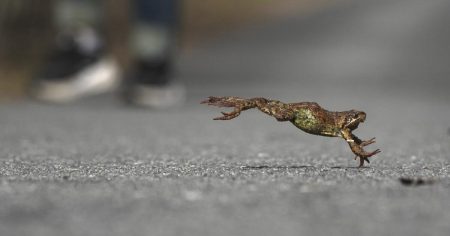Florida’s Sea Turtle Nesting Season Shows Mixed Success Amid Conservation Efforts
A Promising Season for Loggerhead and Green Sea Turtles
The Florida Fish and Wildlife Conservation Commission (FWC) has released the final numbers for the 2024 sea turtle nesting season, and the results bring a mix of hope and challenges for these beloved creatures. Florida’s beaches continue to play a critical role in the survival of sea turtles, with the state hosting an impressive 90% of all loggerhead sea turtle nests in the Southeast United States and about 40% of the world’s total loggerhead nests. This underscores the importance of Florida’s shoreline as a nesting ground for these animals.
Green sea turtles also had a notable season, though their nesting numbers were lower than the record-breaking year of 2023. This drop was expected, as last year’s numbers were unusually high, setting a new benchmark. Despite the decrease, green turtles remain a species of focus for conservationists, as they continue to rely on Florida’s beaches for nesting.
Kemp’s Ridley Turtles Make History in Florida
Among the highlights of the 2024 nesting season, Kemp’s ridley sea turtles made history by setting a new record for the most nests recorded in Florida. This is a significant milestone, especially for a species considered the most endangered sea turtle in the world. According to FWC data, there were only 10 Kemp’s ridley nests in 2023 and 8 in 2022, making this year’s count a remarkable improvement.
St. Johns County played a key role in this success, recording four Kemp’s ridley nests by the end of October. The first Kemp’s ridley nest in the county was documented as recently as 2015, following concerted conservation efforts to expand their nesting grounds. This progress highlights the impact of targeted conservation initiatives, offering hope for the recovery of this critically endangered species.
Cold Stress Poses a Major Threat to Sea Turtles
While the nesting season brought positive news, sea turtles are now facing a new challenge: cold stress. When water temperatures drop into the low 50s or below, sea turtles can become lethargic and strand themselves onshore. This condition has already led to a record number of cold-stressed turtles being admitted to rehabilitation centers across the state.
The Florida Aquarium, a leading facility for sea turtle rehabilitation, announced that it has reached capacity for rescues due to the influx of cold-stressed patients. As of now, the center is caring for 56 sea turtles, the highest number ever recorded at one time. Dr. Debi Luke, Senior Vice President of Conservation at The Florida Aquarium, described this as one of the earliest and most severe cold-stress events on record. Typically, strandings peak between late February and April, but this year’s event has already overwhelmed rehabilitation centers.
Conservationists Call for Public Support
As conservationists work to address the cold-stress crisis, they are urging the public to play a role in protecting these vulnerable creatures. If you encounter a stranded sea turtle, it is crucial to avoid pushing it back into the water. Instead, contact the FWC Wildlife Hotline at 888-404-3922 for assistance. This simple action can help ensure the turtle receives the care it needs to survive.
The situation for sea turtles is not unique, as cold stress is also a leading cause of death for Florida’s manatees. With 565 manatee deaths reported in 2023, the state is grappling with the broader implications of environmental stressors on marine life. These challenges underscore the need for continued conservation efforts and public awareness campaigns.
Looking Ahead: Balancing Progress and Challenges
While the 2024 nesting season brought encouraging news for loggerhead and Kemp’s ridley sea turtles, the cold-stress crisis serves as a stark reminder of the ongoing threats these animals face. Conservationists are cautiously optimistic about the progress made but are sounding the alarm about the need for sustained efforts to protect sea turtles and their habitats.
As Florida continues to be a lifeline for sea turtles, the role of local communities, wildlife experts, and policymakers becomes even more critical. By supporting conservation initiatives, spreading awareness, and taking action when encountering distressed wildlife, individuals can contribute to the long-term survival of these incredible creatures. The road ahead is filled with both challenges and opportunities, but with collective effort, the future of Florida’s sea turtles looks brighter than ever.









